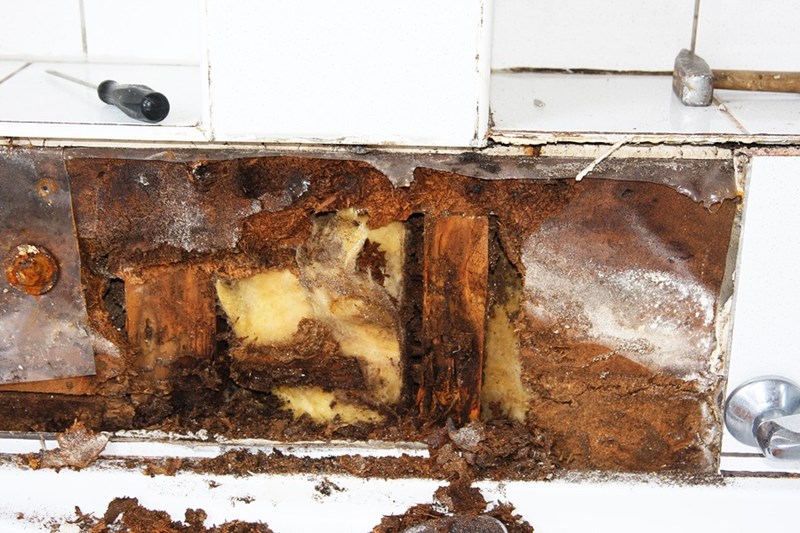Stopping Water Damage in the Bathroom
Stopping Water Damage in the Bathroom
Blog Article
This article following next involving How to Repair and Prevent Bathroom Water Damage is really captivating. Don't miss out on it.

The bathroom is exceptionally vulnerable for wet buildup and potential water damage due to the constant use water in it. This post uses basic evaluation techniques to aid identifying water damages dangers.
The regular use of water in the bathroom makes it exceptionally prone for damp accumulation and also prospective water damage. By examining it routinely, you can lower water relevant problems.
The complying with set of inspections is easy to execute and also ought to be done once in every 3 months in order to keep your bathroom healthy as well as to prevent possible water problems caused by the bath tub, the shower, pipeline joints as well as plumbing, sinks, cupboards, and the commode
Do not disregard performing these examinations as well as be comprehensive while doing them. Keep in mind that these straightforward assessments can save you a great deal of money by providing very early indications for water damages
Bathtub and also Shower
The shower as well as bath tub need special interest and upkeep. Check the ceramic tiles and change if cracked. See to it that there is no missing cement between the floor tiles. Inspect and also replace split caulking at joints where the walls satisfy the flooring or the tub. Obstructed drains and also pipes troubles will stop the bathtub from drying and also may suggest serious issues underneath the bath tub. Talk to a professional promptly to prevent structural damages. Pay attention to discolorations or soft locations around the bathtub walls as they might indicate an interior leakage.
Plumbing
Signs for water damage are difficult to detect considering that the majority of pipes are set up inside the wall surfaces.
Pay unique attention to flooring and also wall surfaces moisture and also spots as they might indicate an undetectable plumbing trouble. Check wetness degrees in adjoining spaces too.
Sinks and Cabinets
Sinks as well as closets are exposed to wetness and also humidity everyday and also are frequently ignored. Evaluate regularly under the sink and on the counter top over it. Fix any drip in the trap as it might recommend drain issues. Check out the sink, slow draining pipes may show an obstructed drain. Replace sink seals if they are split or loosened.
The Toilet
The commode is an at risk water joint. Check the water lines and search for leakages around the commode seat, in the hose, and under the water storage tank. If you find any kind of indicators of moisture on the flooring around the commode, check for leaks in the toilet rim and storage tank seals.
Know that hanging commode dish antiperspirants increases the chances for clogs.
Water Damage Signs In The Bathroom To Avoid Cleanup
Musty smell
This is one of the easiest signs to catch because musty smells are so odorous. The damp, earthy, moldy smell should be a big red flag. The smell will develop when moisture gets trapped in surfaces, and begins to facilitate mold growth. Leaking pipes under cabinets, inside walls, and behind shower fixtures will cause moisture to stay trapped and not dry, which will lead to mold growth and spread. As soon as you notice any musty smells in your bathroom, have it checked for hidden water damage and cleanup signs.
Visible mold
If the smell isn’t there to give it away, sometimes you will actually see mold growth. Finding mold in your bathroom is a serious problem, because mold is very harmful to your health. By the time mold growth is visible, it also means that water damage has already occurred and been present for some time. The only way the mold problem can be resolved is to find the source of the moisture and get it stopped. To safely and adequately remove mold, you need to have professionals handle the remediation. Do not waste any time in getting mold problems addressed, fixed, and sanitized so that you can protect you and your family from the many respiratory symptoms caused by mold exposure.
Damaged floors
Bathroom floors should be able to withstand some exposure to water while still remaining in good condition. However, when excess exposure or water leaks occur, they will begin to damage even the most water-resistant flooring. If you notice any cracking, bubbling, staining, or warping on your bathroom floors, there is probably a water leak somewhere causing the distortion. If you notice areas of the floor have become softer, or even have a spongy feeling, there is probably damage to the subfloor. Subflooring is typically made up of plywood. When plywood is exposed to water or moisture, it will absorb it. Once it has become saturated, the weight of the excess water will cause the wood to swell and soften. Check the floors in your bathroom frequently to catch any of these sings before they lead to damaged subflooring.
Changes on walls
When water leaks behind walls, it will cause changes in the drywall. Peeling plaster, blistering paint, and soggy wallpaper are all good indicators that excess water is building up behind the wall. Water leaking behind drywall will cause it to swell and be soft to the tough. If you start to notice gaps along the trim of your walls, or where tile meets the wall, it could also be a strong indicator that there is a leak behind the wall. Any changes, distortion, or damage on the walls should be evaluated as soon as you notice it to prevent further water damage and cleanup.

We had been guided to that article on Common Causes of Water Damage in a Bathroom through an associate on a different website. Remember to take the opportunity to share this entry if you liked it. I praise you for your time. Come back soon.
Customer Reviews Report this page